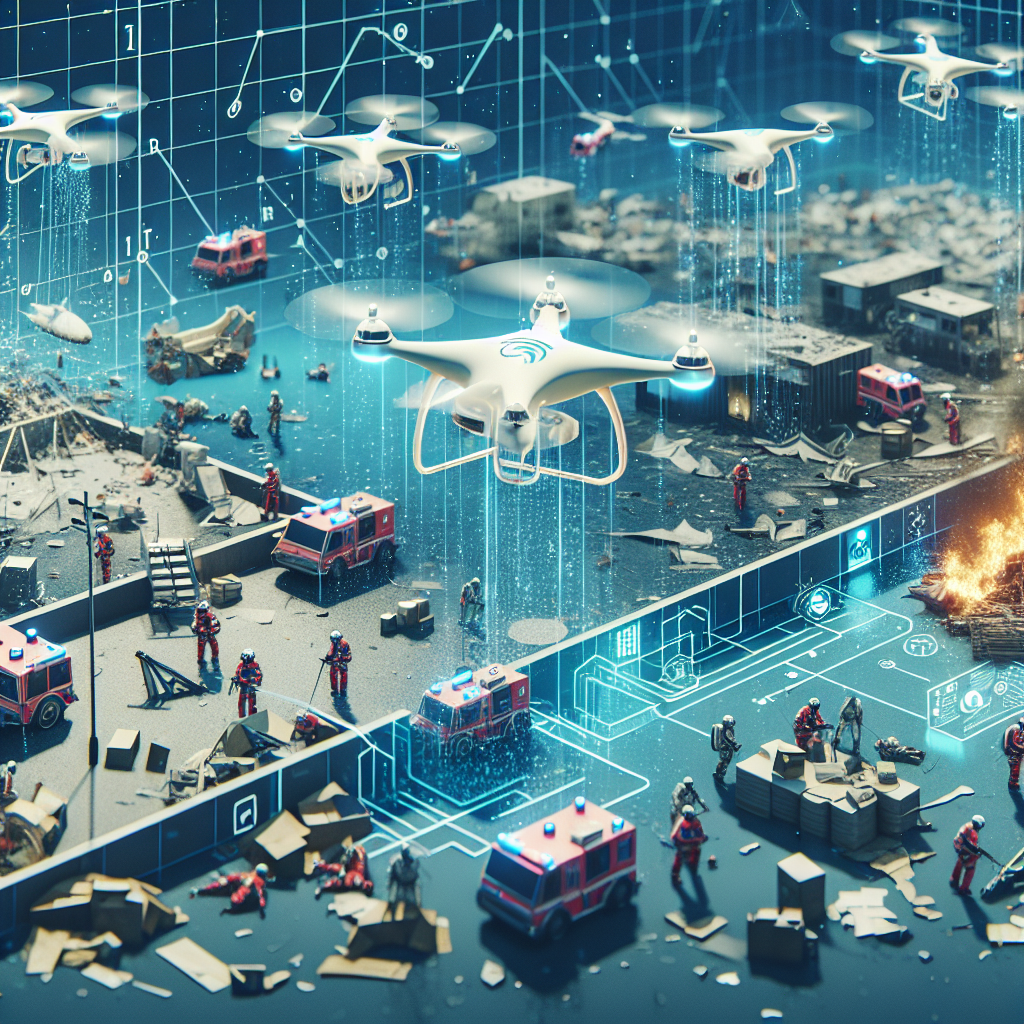Natural disasters such as hurricanes, earthquakes, floods, and wildfires can cause widespread destruction and devastation, resulting in loss of life and property. Responding to these disasters quickly and effectively is crucial in order to save lives and minimize damage. In recent years, artificial intelligence (AI) and machine learning have emerged as powerful tools that can significantly improve disaster response efforts.
AI and machine learning technologies can be used in various ways to enhance disaster response. One of the key applications of AI in disaster response is predictive modeling. By analyzing historical data and real-time information, AI algorithms can predict the likelihood and severity of a disaster, allowing authorities to take preemptive measures to mitigate its impact. For example, AI-based models can predict the path of a hurricane or the spread of a wildfire, enabling authorities to evacuate people from high-risk areas and allocate resources more effectively.
Another important role of AI in disaster response is in damage assessment. By analyzing satellite images and other data sources, AI algorithms can rapidly assess the extent of damage caused by a disaster, helping authorities prioritize their response efforts. AI can also be used to analyze social media posts and other sources of real-time information to identify areas that are most in need of assistance.
Machine learning algorithms can also be used to optimize resource allocation during disaster response. By analyzing factors such as population density, infrastructure, and accessibility, machine learning models can help authorities determine the most efficient way to deploy resources such as food, water, and medical supplies to affected areas. This can help ensure that resources are distributed equitably and reach those who need them most.
In addition to these applications, AI and machine learning can also be used to improve communication and coordination among different stakeholders involved in disaster response. For example, chatbots powered by AI can provide real-time information and assistance to affected individuals, helping them find shelter, medical care, or other essential services. Machine learning algorithms can also analyze communication patterns among response teams to identify bottlenecks and inefficiencies, allowing authorities to streamline their operations and respond more effectively.
Overall, AI and machine learning have the potential to revolutionize disaster response efforts by enabling authorities to predict, assess, and respond to disasters more quickly and effectively. By harnessing the power of these technologies, we can save lives, reduce suffering, and build more resilient communities in the face of natural disasters.
FAQs:
Q: How can AI help in predicting natural disasters?
A: AI can help predict natural disasters by analyzing historical data, real-time information, and environmental factors to identify patterns and trends that may indicate the likelihood and severity of a disaster. By using AI algorithms to analyze these data sources, authorities can make more accurate predictions and take preemptive measures to mitigate the impact of a disaster.
Q: Can AI be used to assess the damage caused by a natural disaster?
A: Yes, AI can be used to assess the damage caused by a natural disaster by analyzing satellite images, aerial photographs, and other data sources to identify areas that have been affected. By using AI algorithms to analyze these data sources, authorities can quickly assess the extent of the damage and prioritize their response efforts accordingly.
Q: How can machine learning help in resource allocation during disaster response?
A: Machine learning can help in resource allocation during disaster response by analyzing factors such as population density, infrastructure, and accessibility to determine the most efficient way to deploy resources to affected areas. By using machine learning algorithms to analyze these factors, authorities can ensure that resources are distributed equitably and reach those who need them most.
Q: How can AI and machine learning improve communication and coordination among different stakeholders involved in disaster response?
A: AI and machine learning can improve communication and coordination among different stakeholders involved in disaster response by providing real-time information, analyzing communication patterns, and identifying bottlenecks and inefficiencies. By using these technologies to streamline communication and coordination, authorities can respond more effectively to disasters and ensure that resources are deployed efficiently.

